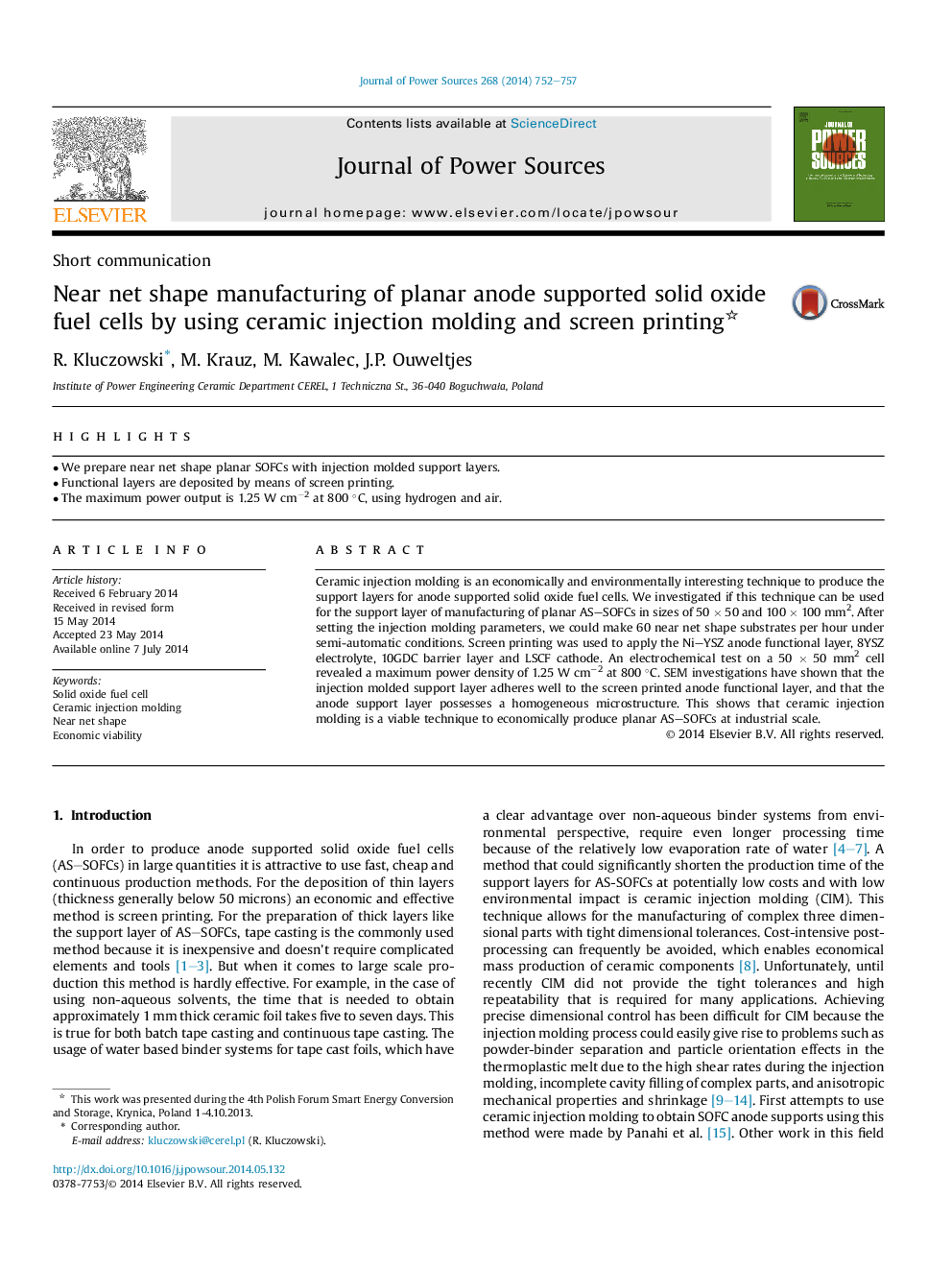| Article ID | Journal | Published Year | Pages | File Type |
|---|---|---|---|---|
| 7736182 | Journal of Power Sources | 2014 | 6 Pages |
Abstract
Ceramic injection molding is an economically and environmentally interesting technique to produce the support layers for anode supported solid oxide fuel cells. We investigated if this technique can be used for the support layer of manufacturing of planar AS-SOFCs in sizes of 50 Ã 50 and 100 Ã 100 mm2. After setting the injection molding parameters, we could make 60 near net shape substrates per hour under semi-automatic conditions. Screen printing was used to apply the Ni-YSZ anode functional layer, 8YSZ electrolyte, 10GDC barrier layer and LSCF cathode. An electrochemical test on a 50 Ã 50 mm2 cell revealed a maximum power density of 1.25 W cmâ2 at 800 °C. SEM investigations have shown that the injection molded support layer adheres well to the screen printed anode functional layer, and that the anode support layer possesses a homogeneous microstructure. This shows that ceramic injection molding is a viable technique to economically produce planar AS-SOFCs at industrial scale.
Related Topics
Physical Sciences and Engineering
Chemistry
Electrochemistry
Authors
R. Kluczowski, M. Krauz, M. Kawalec, J.P. Ouweltjes,
